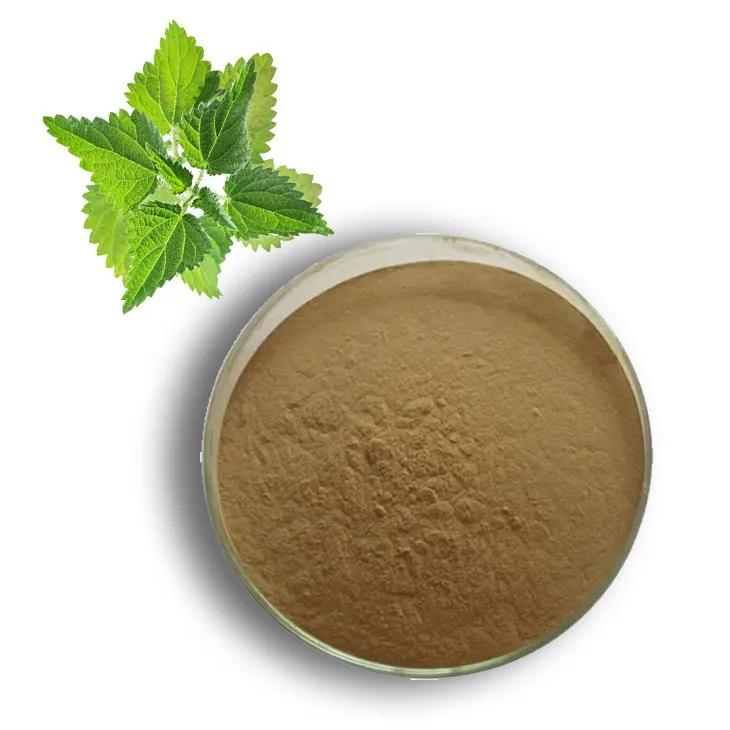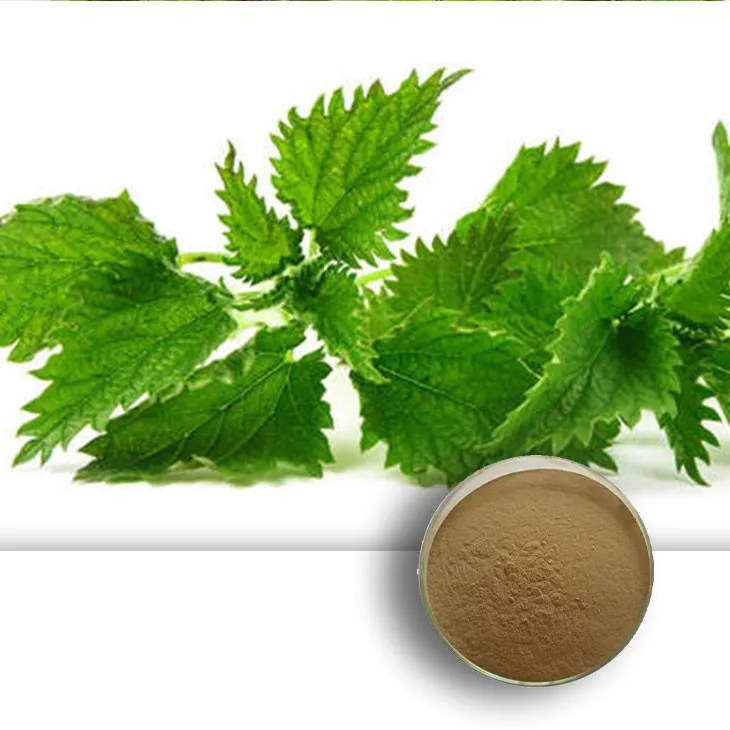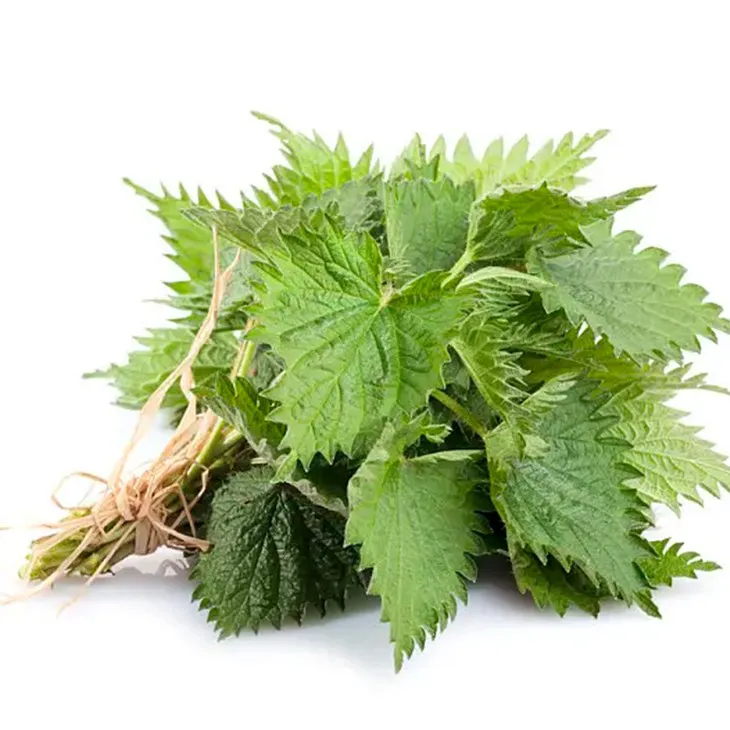- 0086-571-85302990
- sales@greenskybio.com
How to Extract Nettle Leaf Extract by Steam Distillation.
2024-11-28

1. Introduction
Nettle leaves have been used for centuries in traditional medicine due to their various beneficial properties. Extracting Nettle leaf extract by steam distillation is a common and effective method. This process allows us to obtain the valuable components of nettle leaves in a concentrated form. In this article, we will explore in detail how to carry out this extraction process, from the initial collection of nettle leaves to the final product and its applications.

2. Gathering and Handling Nettle Leaves
2.1. Identification of Nettle Plants
Before gathering nettle leaves, it is crucial to correctly identify the nettle plants. Urtica dioica, the common nettle, is often the target for extraction. It has characteristic serrated leaves and stinging hairs on the stems and leaves. Be careful when handling the plants as the stinging hairs can cause skin irritation. Wear appropriate gloves and long - sleeved clothing during the collection process.
2.2. Optimal Time for Collection
The best time to collect nettle leaves is in the spring when the plants are young and tender. At this stage, the leaves contain a higher concentration of the desired compounds. Avoid collecting leaves during periods of heavy rain or immediately after rain, as the moisture content may affect the extraction process later. Also, try to collect leaves from areas that are free from pollutants such as pesticides and industrial emissions.
2.3. Cleaning and Pre - treatment
Once the nettle leaves are collected, they need to be carefully cleaned. Remove any debris, dirt, or other foreign materials. After cleaning, the leaves can be either air - dried or gently dried in a low - temperature oven. This reduces the moisture content in the leaves, which is important for the steam distillation process. However, do not over - dry the leaves as this may lead to the loss of some volatile compounds.

3. Mechanics of Steam Distillation
3.1. Equipment Setup
Steam distillation requires specific equipment. The basic setup includes a distillation flask, a condenser, a receiving flask, and a heat source. The distillation flask should be large enough to hold the nettle leaves without overcrowding. The condenser is used to cool the steam and convert it back into liquid. The receiving flask is where the distilled extract will be collected. The heat source can be a Bunsen burner, an electric heating mantle, or a hot plate. Ensure that all the equipment is clean and properly assembled before starting the distillation process.
3.2. Adding Nettle Leaves to the Flask
Place the pre - treated nettle leaves into the distillation flask. Do not pack the leaves too tightly as this may impede the flow of steam through the leaves. A loose packing allows for better steam penetration and more efficient extraction. It is advisable to add a small amount of water to the flask along with the leaves. This water will be converted into steam during the distillation process and help carry the volatile compounds out of the leaves.
3.3. Heating and Steam Generation
Once the nettle leaves and water (if added) are in the distillation flask, start heating the flask using the heat source. As the water heats up, it turns into steam. The steam passes through the nettle leaves, carrying with it the volatile compounds present in the leaves. The temperature should be carefully controlled during this process. A too - high temperature may cause the decomposition of some of the valuable compounds in the leaves, while a too - low temperature may result in inefficient extraction.
3.4. Condensation and Collection
The steam, along with the volatile compounds from the nettle leaves, then enters the condenser. The condenser cools the steam, causing it to condense back into a liquid. This liquid, which contains the Nettle leaf extract, drips into the receiving flask. The collection process may take some time, depending on the amount of nettle leaves used and the efficiency of the distillation setup. It is important to monitor the process to ensure that the receiving flask does not overflow.

4. Factors Influencing the Extraction Efficiency
4.1. Particle Size of Nettle Leaves
The size of the nettle leaves can have an impact on the extraction efficiency. Finely chopped or ground leaves generally have a larger surface area exposed to the steam. This allows for better interaction between the steam and the compounds in the leaves, resulting in a more efficient extraction. However, if the leaves are too finely ground, they may form clumps and impede the steam flow, so a balance needs to be struck.
4.2. Steam Flow Rate
The rate at which the steam flows through the nettle leaves is another crucial factor. A too - slow steam flow may not be able to carry out all the volatile compounds effectively, while a too - fast steam flow may not allow sufficient time for the steam to interact with the compounds in the leaves. An optimal steam flow rate needs to be determined experimentally for the best extraction results.
4.3. Distillation Time
The length of time for which the distillation process is carried out also affects the extraction efficiency. If the distillation time is too short, not all the volatile compounds may be extracted. On the other hand, if the distillation time is too long, it may lead to the extraction of unwanted compounds or the degradation of the desired ones. The optimal distillation time may vary depending on factors such as the amount of nettle leaves, the steam flow rate, and the nature of the compounds being extracted.
5. Post - extraction Procedures
5.1. Separation of Extract from Water
The Nettle leaf extract collected in the receiving flask is usually in a mixture with water. To obtain a more concentrated extract, the extract needs to be separated from the water. This can be done using techniques such as liquid - liquid extraction or by using a separating funnel. In liquid - liquid extraction, an appropriate organic solvent that is immiscible with water can be added to the mixture. The extract will partition into the organic solvent, which can then be separated from the water layer.
5.2. Drying and Concentration
After separating the extract from the water, the next step is to dry and concentrate the extract. This can be achieved by using techniques such as rotary evaporation or freeze - drying. Rotary evaporation involves removing the solvent (if an organic solvent was used in the separation step) under reduced pressure and at a controlled temperature. Freeze - drying is a more gentle method that involves freezing the extract and then removing the water by sublimation under vacuum. The resulting dried and concentrated extract can be stored for further use.
6. Benefits of Nettle Leaf Extract
6.1. Medicinal Properties
Nettle leaf extract has been reported to have various medicinal properties. It has anti - inflammatory effects, which can be beneficial for conditions such as arthritis. It may also have antioxidant properties, helping to protect the body against oxidative stress. Additionally, it has been used in traditional medicine to treat skin conditions, such as eczema and psoriasis. The extract contains compounds such as flavonoids, phenolic acids, and vitamins, which are thought to contribute to these beneficial effects.
6.2. Cosmetic Applications
In the cosmetic industry, nettle leaf extract is used in a variety of products. It can be added to shampoos and conditioners, where it may help improve hair health. It has the potential to strengthen hair follicles and reduce hair loss. In skin care products, such as creams and lotions, the extract can provide moisturizing and anti - aging effects. It can also help soothe irritated skin, making it a valuable ingredient in products for sensitive skin.
6.3. Nutritional Value
Nettle leaf extract is also rich in nutrients. It contains vitamins such as vitamin C, vitamin A, and some B - vitamins. It also has minerals like iron, calcium, and potassium. Incorporating nettle leaf extract into dietary supplements or functional foods can provide these essential nutrients, which are beneficial for overall health.
7. Incorporating Nettle Leaf Extract into Different Products
7.1. Pharmaceutical Formulations
In the pharmaceutical field, nettle leaf extract can be incorporated into tablets, capsules, or tinctures. For tablets and capsules, the extract needs to be formulated with appropriate excipients such as binders, fillers, and disintegrants to ensure proper formation and dissolution of the dosage form. Tinctures are liquid preparations that can be easily prepared by dissolving the extract in an appropriate solvent, usually ethanol or a mixture of ethanol and water. These pharmaceutical formulations can be used for the treatment of various diseases and conditions as described earlier.
7.2. Cosmetic and Personal Care Products
As mentioned earlier, nettle leaf extract can be added to a wide range of cosmetic and personal care products. In shampoos, it can be added at a concentration of around 1 - 5% depending on the desired effect. In skin care products, the concentration may vary from 0.5 - 3%. The extract needs to be properly dissolved or dispersed in the product matrix to ensure its effectiveness. Additionally, stability tests need to be carried out to ensure that the extract does not interact with other ingredients in the product and cause any stability issues.
7.3. Food and Beverage Products
Nettle leaf extract can also be incorporated into food and beverage products. It can be added to herbal teas, where it can provide both flavor and health benefits. In functional foods such as energy bars or dietary supplements, the extract can be added as a source of nutrients. However, when adding the extract to food and beverage products, it is important to comply with food safety regulations regarding the use of herbal extracts.
8. Conclusion
Steam distillation is a useful method for extracting nettle leaf extract. By following the proper procedures for gathering and handling nettle leaves, setting up the steam distillation equipment, and controlling the extraction process, we can obtain a high - quality extract. The nettle leaf extract has a wide range of benefits and can be incorporated into various products in different industries. However, it is important to note that further research is still needed to fully understand the properties and potential applications of nettle leaf extract. Additionally, safety and regulatory aspects need to be carefully considered when using nettle leaf extract in commercial products.
FAQ:
Q1: What are the initial steps for gathering nettle leaves?
The initial steps for gathering nettle leaves involve choosing the right time. It is best to collect them when they are in their prime, usually in spring or early summer. When gathering, wear protective gloves as nettle leaves can sting. Select healthy, undamaged leaves from the plant.
Q2: How does steam distillation work in extracting nettle leaf extract?
Steam distillation works by passing steam through the nettle leaves. The steam helps to vaporize the volatile compounds present in the leaves. These vaporized compounds, along with the steam, then pass through a condenser. In the condenser, the steam is cooled and converted back into liquid, and the nettle leaf extract is collected as a liquid mixture which can be further separated and purified.
Q3: What factors can influence the extraction efficiency of nettle leaf extract by steam distillation?
Several factors can influence the extraction efficiency. The quality and freshness of the nettle leaves play a role. Older or damaged leaves may have lower amounts of the desired compounds. The temperature and pressure during steam distillation are also crucial. If the temperature is too low, not all the volatile compounds may be vaporized efficiently. Additionally, the duration of the distillation process can affect the amount and quality of the extract obtained.
Q4: What are the post - extraction procedures for nettle leaf extract?
After extraction, the nettle leaf extract may need to be further purified. This can involve filtration to remove any solid particles or impurities. It may also be necessary to store the extract in appropriate containers, preferably in a cool, dark place to prevent degradation. Additionally, analysis of the extract's composition may be carried out to ensure its quality and potency.
Q5: What are the benefits of nettle leaf extract?
Nettle leaf extract has several benefits. It is known for its antioxidant properties, which can help protect the body against oxidative stress. It may also have anti - inflammatory effects, potentially useful for various health conditions. In skincare, it can be used for its soothing and moisturizing properties. Additionally, in some traditional medicine, it has been used to support urinary health.
Q6: How can nettle leaf extract be incorporated into different products?
Nettle leaf extract can be incorporated into different products in various ways. In cosmetics, it can be added to creams, lotions, and serums for its skin - benefiting properties. In the food industry, it can be used as an ingredient in herbal teas or dietary supplements. In the pharmaceutical field, it may be used in the development of medications aimed at treating certain health conditions related to inflammation or antioxidant needs.
Related literature
- Steam Distillation of Botanical Extracts: A Comprehensive Review"
- "The Chemistry and Benefits of Nettle Leaf Extract"
- "Optimizing Extraction Processes: Nettle Leaf Extract as a Case Study"
- ▶ Hesperidin
- ▶ citrus bioflavonoids
- ▶ plant extract
- ▶ lycopene
- ▶ Diosmin
- ▶ Grape seed extract
- ▶ Sea buckthorn Juice Powder
- ▶ Beetroot powder
- ▶ Hops Extract
- ▶ Artichoke Extract
- ▶ Reishi mushroom extract
- ▶ Astaxanthin
- ▶ Green Tea Extract
- ▶ Curcumin Extract
- ▶ Horse Chestnut Extract
- ▶ Other Problems
- ▶ Boswellia Serrata Extract
- ▶ Resveratrol Extract
- ▶ Marigold Extract
- ▶ Grape Leaf Extract
- ▶ blog3
- ▶ blog4
-
The best organic aged garlic extract.
2024-11-28
-
Konjac flour manufacturers from China.
2024-11-28
-
Certified organic comfrey extract.
2024-11-28
-
The best sophora japonica extract in 2024.
2024-11-28
-
Black Rice Extract Manufacturers from China.
2024-11-28
-
Nature's Bounty Rhodiola Root Extract.
2024-11-28
-
Peppermint oil manufacturers from China.
2024-11-28
-
The Best Boswellia Serrata Extract in 2024.
2024-11-28
-
The Best Curcumin in 2024.
2024-11-28
-
Lemon Extract
2024-11-28
-
Kupilu Extract
2024-11-28
-
Giant Knotweed Extract
2024-11-28
-
Green coffee bean Extract
2024-11-28
-
Cranberry Extract
2024-11-28
-
Motherwort Extract
2024-11-28
-
Curcumin Extract
2024-11-28
-
Nettle Root Extract
2024-11-28
-
Resveratrol extract
2024-11-28
-
Rosemary extract
2024-11-28





















